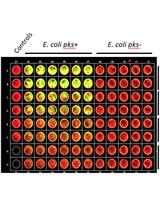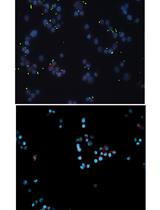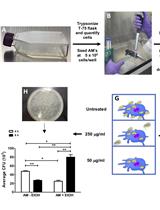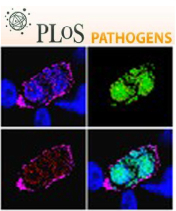- Submit a Protocol
- Receive Our Alerts
- Log in
- /
- Sign up
- My Bio Page
- Edit My Profile
- Change Password
- Log Out
- EN
- EN - English
- CN - 中文
- Protocols
- Articles and Issues
- For Authors
- About
- Become a Reviewer
- EN - English
- CN - 中文
- Home
- Protocols
- Articles and Issues
- For Authors
- About
- Become a Reviewer
Gentamicin Protection Assay to Determine Bacterial Survival within Macrophages
Published: Vol 4, Iss 18, Sep 20, 2014 DOI: 10.21769/BioProtoc.1235 Views: 23529
Reviewed by: Kanika GeraAnonymous reviewer(s)

Protocol Collections
Comprehensive collections of detailed, peer-reviewed protocols focusing on specific topics
Related protocols

Quantification of Colibactin-associated Genotoxicity in HeLa Cells by In Cell Western (ICW) Using γ-H2AX as a Marker
Sophie Tronnet and Eric Oswald
Mar 20, 2018 8044 Views

Adhesion of Enteroaggregative E. coli Strains to HEK293 Cells
Jorge Luis Ayala-Lujan and Fernando Ruiz-Perez
Apr 20, 2018 6835 Views

Intracellular Invasion and Killing Assay to Investigate the Effects of Binge Alcohol Toxicity in Murine Alveolar Macrophages
Victor Jimenez Jr and Fernando P Monroy
Jan 20, 2019 6709 Views
Abstract
Macrophages are key cells involved in orchestrating host defense against infections. Here, we describe the protocol for a bacterial killing assay in macrophages that can be adapted to any bacterial pathogen. Using this assay, we analyzed the survival of wild-type and mutant strains of Escherichia coli (E. coli) within RAW 264.7 cells, a widely used macrophage cell line. Bacterial mutants defective in intracellular survival within macrophages can be delineated using this assay.
Materials and Reagents
- RAW 264.7 cells (ATCC, TIB-71 )
- E. coli CFT073 or other strains of bacteria
- LB broth (Beckton Dickinson, catalog number: 244610 )
- Agar (Beckton Dickinson, catalog number: 214010 )
- RPMI1640 (Life Technologies, catalog number: 11875-093 )
- Gentamicin 50 mg/ml (Life Technologies, catalog number: 15750-102 )
- PBS (pH 7.4)
- LB plates (see Recipes)
- Certified, heat inactivated fetal bovine serum (FBS) (Life Technologies, catalog number: 10082139 ) (see Recipes)
- 100x penicillin, streptomycin and glutamine (PSG) (Life Technologies, catalog number: 10378-016 ) (see Recipes)
- Saponin (Sigma-Aldrich, catalog number: 8047-15-2) (see Recipes)
Equipment
- 24 well plates (Corning, Costar®, catalog number: 3524 )
- 0.22 micron filter (Millipore, catalog number: SCGP00525 )
- 37 °C, 5% CO2 incubator
- Sorvall Legend RT table top centrifuge
- Shimadzu UV-1601PC Spectrophotometer
Procedure
- Culture RAW 264.7 cells in RPMI1640 with 10% heat inactivated fetal bovine serum and 1x penicillin streptomycin and glutamine at 37 °C in a CO2 incubator.
- Count the cells using standard procedures and seed 2 x 105 RAW cells/well, by adding 1 ml per well in a 24 well plate. Set up 2 plates; one for T0 and another for T2 and incubate in a CO2 incubator.
- Start overnight cultures of CFT073 in 3 ml of LB broth in a 10 ml polypropylene tube and incubate at 37 °C shaking at 200 rpm. Use appropriate culture media when using other bacterial strains.
- Determine the multiplicity of infection (MOI = number of bacteria per RAW 264.7 cell) and alter the inocula preparation accordingly. For an MOI of 10, add 2 x 106 cfu of E. coli CFT073 for a well containing 2 x 105 RAW cells.
- Pellet the bacterial cells from the 3 ml culture by centrifuging at 4,000 rpm for 10 min in a Sorvall centrifuge. Resupend the pellet in 3 ml PBS.
- Adjust the OD600 of broth culture to 4 in PBS, by measuring the optical density of a 1:10 diluted culture in a spectrophotometer and calculating the optical density of undiluted culture.
- Dilute 1:100 in PBS.
- Dilute 1:10 in RPMI 1640 without antibiotics.
- Wash RAW cells twice with PBS.
- Add 1 ml of diluted culture to each well; three technical replicates per sample and three biological replicates of the entire experiment are recommended. Use the same set up for T0 and T2 plates.
- Incubate at 37 °C, 5% CO2 for 30 min.
- Aspirate supernatant and wash 3 times with PBS.
- Add 1 ml of RPMI 1640 with gentamicin (200 µg/ml) per well.
- Incubate the T0 plate at 37 °C, 5% CO2 for 15 min.
- Incubate the T2 plate at 37 °C, 5% CO2 for 2 h.
- After 15 min or 2 h, remove the supernatants entirely by aspiration.
- Lyse cells with 1 ml of filter sterilized 1% saponin in H2O per well by incubating for 10 min at room temperature followed by vigorous pipetting. Determine the extent of lysis using a standard inverted microscope.
- Plate undiluted and -2 dilution for T0 and T2 time points on LB plates.
- % Killing = [(T0-T2)/T0]*100
Recipes
- LB plates
Add 15 g of agar to 1 L of LB broth
- FBS and PSG
Added at 10% and 1x final concentration, respectively, to RPMI1640
- Saponin
Dissolved in autoclaved double distilled water and filter sterilized using a 0.22 μM filter
Acknowledgments
This protocol was adapted from the publication: Subashchandrabose et al. (2013).
References
- Subashchandrabose, S., Smith, S. N., Spurbeck, R. R., Kole, M. M. and Mobley, H. L. (2013). Genome-wide detection of fitness genes in uropathogenic Escherichia coli during systemic infection. PLoS Pathog 9(12): e1003788.
Article Information
Copyright
© 2014 The Authors; exclusive licensee Bio-protocol LLC.
How to cite
Readers should cite both the Bio-protocol article and the original research article where this protocol was used:
- Subashchandrabose, S. and Mobley, H. L. (2014). Gentamicin Protection Assay to Determine Bacterial Survival within Macrophages. Bio-protocol 4(18): e1235. DOI: 10.21769/BioProtoc.1235.
- Subashchandrabose, S., Smith, S. N., Spurbeck, R. R., Kole, M. M. and Mobley, H. L. (2013). Genome-wide detection of fitness genes in uropathogenic Escherichia coli during systemic infection. PLoS Pathog 9(12): e1003788.
Category
Microbiology > Antimicrobial assay > Killing assay
Microbiology > Microbe-host interactions > In vitro model > Cell line
Immunology > Host defense > General
Do you have any questions about this protocol?
Post your question to gather feedback from the community. We will also invite the authors of this article to respond.
Share
Bluesky
X
Copy link









